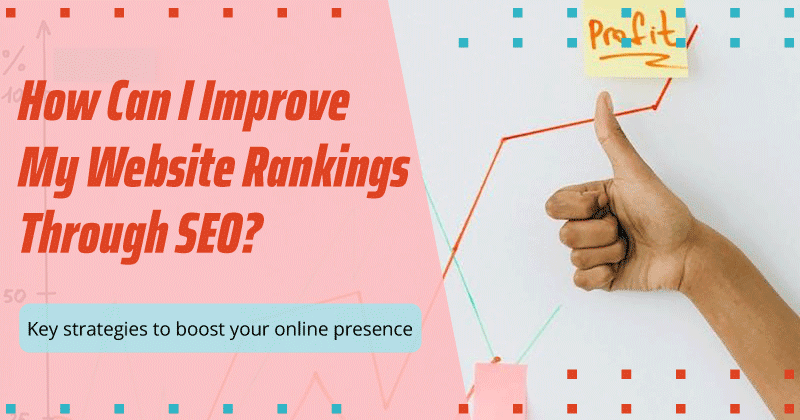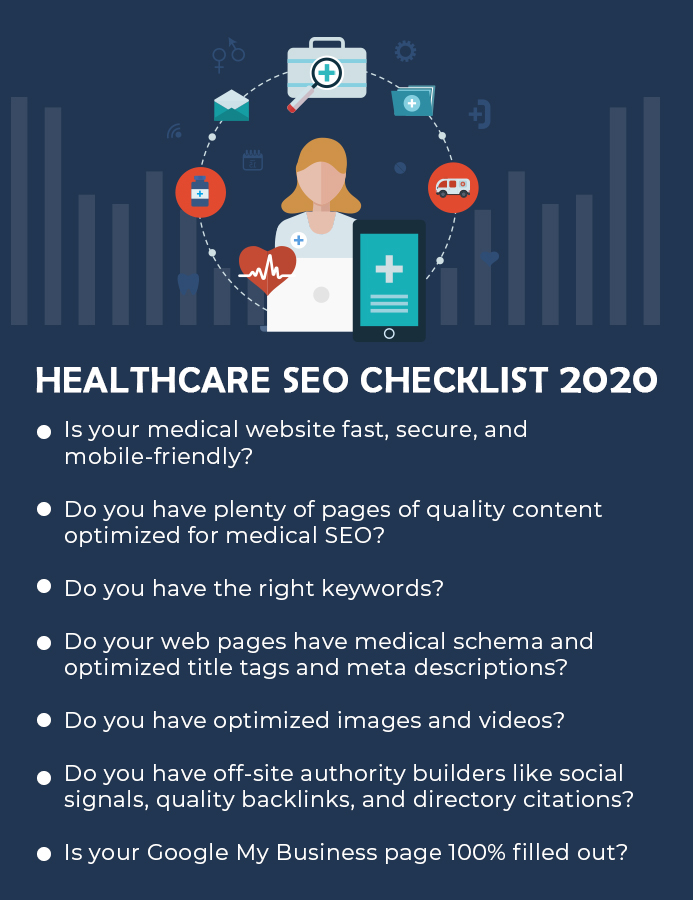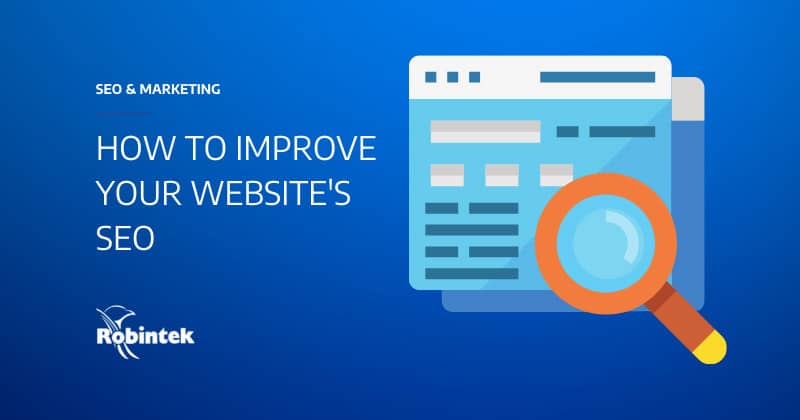Are you looking to boost your website’s visibility and attract more visitors? Improving your SEO page is a smart move that can make a significant difference.
Whether you’re new to SEO or have been working on it for a while, there’s always room for improvement. You might be wondering how you can enhance your page to rank higher on search engines like Google. With the right strategies and techniques, you can transform your page into a powerful tool that draws more traffic and engages your audience.
Dive into this article to discover actionable tips that will help you elevate your SEO game and achieve the results you desire. Let’s unlock the secrets to optimizing your page effectively and making your website stand out.

Credit: www.bruceclay.com
Keyword Research
Keyword research is a crucial step in improving your SEO page. It’s like setting the foundation for a house—without it, everything else might crumble. You want to ensure you’re targeting the right words that your audience uses to find content like yours. This process not only boosts your visibility but also helps attract the right visitors. Let’s dive into some practical ways to refine your keyword strategy.
Tools For Finding Keywords
Imagine having a treasure map that leads you to the perfect keywords. Tools like Google Keyword Planner, SEMrush, and Ahrefs are those maps. They show you the search volume and competitiveness of keywords. Using these tools, you can identify which keywords are worth targeting. They also offer insights into trends, helping you stay ahead. Have you tried any of these tools yet?
Long-tail Vs Short-tail Keywords
Long-tail keywords are like detailed directions—they guide users with specific needs to your page. For example, “best vegan recipes for beginners” targets a specific group. Short-tail keywords are broader, like “vegan recipes,” and often face high competition. Balancing both types can maximize your reach. Which type of keyword do you think fits your content best?
Analyzing Competitor Keywords
Think of competitor keyword analysis as peeking into your neighbor’s garden to see what grows best. Tools like SpyFu and SEMrush allow you to see what keywords your competitors rank for. This can reveal gaps in your strategy and opportunities to capitalize on. It’s about understanding what works and finding ways to do it better. Have you ever considered what your competitors are doing right?
Improving your SEO page through keyword research requires a strategic approach. It’s about using the right tools, finding the balance between long-tail and short-tail keywords, and keeping an eye on competitors. Each step brings you closer to reaching your audience effectively. So, are you ready to boost your SEO with smart keyword choices?

Credit: www.practicebuilders.com
Content Optimization
Content optimization is key to boosting your page’s SEO. It helps search engines understand your content better. Well-optimized content attracts more visitors and improves engagement. Let’s explore some effective strategies for content optimization.
Crafting Compelling Titles
Titles are the first thing users see. A compelling title grabs attention quickly. Use keywords naturally in your title. Keep it concise and relevant. Avoid jargon or complex words. Aim for clarity and interest. A good title can improve click-through rates.
Using Headers Effectively
Headers organize content and improve readability. They guide readers through the text. Use headers to break down sections. This structure helps search engines index your content. Include relevant keywords in your headers. H1 is for main titles, H2 for sections, and H3 for subsections.
Optimizing Meta Descriptions
Meta descriptions summarize your page content. They appear below the title in search results. A well-crafted meta description can increase clicks. Use primary keywords in the description. Keep it between 150-160 characters. Make it informative and engaging. Encourage users to learn more by clicking your link.
On-page Seo Techniques
Boost page ranking by enhancing on-page SEO. Optimize titles and meta descriptions with relevant keywords. Improve site speed and mobile friendliness for better user experience.
Improving your website’s SEO can feel like a puzzle, but focusing on on-page SEO techniques can make a big difference. These strategies directly affect how search engines view your site and how users interact with your content. By honing these techniques, you can boost your site’s visibility and user experience. So, let’s dive into some key on-page SEO tactics you can use right now.Internal Linking Strategies
Internal links connect different pages on your site, helping both users and search engines understand your content better. They guide visitors to related pages, keeping them on your site longer. Aim to link relevant pages naturally within your content. Consider your website a library; each link is a path to more knowledge. When you write a blog post about SEO, link it to another post about keyword research. This not only aids in navigation but also distributes page authority across your site.Image Optimization
Images can captivate your audience, but they can also slow down your site if not optimized. Use descriptive file names and alt text to tell search engines what your images are about. Compress images to improve load times without sacrificing quality. Think of alt text as a way to communicate with search engines and assist visually impaired users. Rather than a generic “image1.jpg,” use something like “on-page-seo-techniques.jpg” to enhance relevance. This small change can improve your site’s accessibility and SEO.Url Structure Best Practices
A clean URL structure makes your site more user-friendly and helps search engines understand your content. Keep URLs concise and include keywords that reflect the page’s topic. Avoid using unnecessary characters or numbers that confuse both users and search engines. Imagine trying to remember a complex password—that’s what a messy URL feels like. A simple URL like “yoursite.com/seo-tips” is easy to remember and share. This practice not only boosts SEO but also enhances the user experience by making navigation seamless. Have you tried any of these techniques on your website? What changes did you notice in your search rankings? As you refine your on-page SEO, remember that even small tweaks can lead to significant improvements. Keep experimenting and monitoring your results to see what works best for your site.Technical Seo
Technical SEO is the backbone of a well-optimized website. It ensures that your site is not only accessible but also performs efficiently for users and search engines alike. It’s the nuts and bolts that often get overlooked but are vital for your SEO strategy. Let’s dive into some key aspects of technical SEO that can drastically improve your site’s visibility and performance.
Improving Page Load Speed
Page load speed is crucial. Slow pages frustrate users and can lead to high bounce rates. Compress images and minimize code to speed things up. Tools like Google PageSpeed Insights can give you actionable suggestions. If you’ve ever clicked away because a page took too long, you know how important this is. A faster site not only retains visitors but also ranks better.
Mobile-friendliness
Is your website mobile-friendly? With most people browsing on their phones, this is non-negotiable. Use responsive design to ensure your site looks great on any device. If users can’t navigate your site on mobile, they’re gone. Google’s Mobile-Friendly Test can help you spot issues. Have you ever squinted at tiny text on a non-responsive site? It’s frustrating, right?
Implementing Ssl Certificates
SSL certificates secure your website and build trust. They encrypt data, protecting user information from hackers. Websites with SSL are favored by search engines. Check for the padlock icon in your browser—it’s a sign of security. Would you input your credit card details on an unsecured site? Probably not. Implementing SSL is a simple yet effective step to boost your site’s credibility.
Consider these aspects of technical SEO as essential maintenance for your website. Do they seem like hurdles or opportunities to you? Tackling them can lead to significant improvements in your site’s performance and ranking. Keep your site technically sound, and watch your SEO soar. Have you checked your website’s technical health lately?
User Experience Enhancement
Enhancing user experience is crucial for improving your SEO page. When visitors have a positive experience, they are more likely to stay on your site, engage with your content, and return in the future. This can lead to better search rankings and increased traffic. By focusing on user experience, you’re not just optimizing for search engines but also creating an environment where users feel valued and understood.
Boosting Site Navigation
Think about the last time you visited a website and couldn’t find what you were looking for. Frustrating, right? Clear and intuitive navigation is essential. Make sure your menu is easy to understand and accessible from any page.
Consider organizing your content in a logical manner. Use categories and subcategories that guide users smoothly through your site. A good rule of thumb is to ensure that users can find what they need within three clicks.
Test your navigation with friends or colleagues. Their feedback can highlight areas for improvement. This step is crucial for identifying potential bottlenecks that might cause confusion.
Engaging Call-to-actions
Call-to-actions (CTAs) are more than just buttons or links. They are pathways to deeper engagement with your content. Craft CTAs that are clear and compelling.
Use active language that prompts action. “Discover your solution” or “Start your journey” are far more engaging than “Click here.”
Place CTAs strategically where they naturally fit within the flow of your content. This way, they feel like a part of the conversation, rather than an interruption.
Reducing Bounce Rate
A high bounce rate can signal that users aren’t finding what they need. This can negatively impact your SEO. Focus on creating content that is relevant and engaging.
Evaluate the first impression your site makes. Does the design and layout encourage users to explore further? If your site looks outdated or cluttered, users may leave quickly.
Consider adding multimedia elements like images or videos. These can capture attention and encourage longer visits. Providing a mix of content formats can cater to different preferences.
Improving user experience isn’t just about making your site pretty. It’s about understanding your audience and delivering what they need. What changes can you make today to enhance your site’s user experience?
Analytics And Monitoring
Boost your SEO page by using analytics and monitoring tools. These tools help track visitor behavior and identify improvement areas. Regularly analyze metrics like bounce rates and keyword performance to refine your strategy.
Understanding how your website is performing is crucial for improving SEO. Analytics and monitoring provide insights into what’s working and what’s not. This helps you make informed decisions to boost your search engine rankings.Using Google Analytics
Google Analytics is a powerful tool for tracking your website’s performance. It offers insights into user demographics, traffic sources, and more. Are you leveraging these insights to enhance your SEO strategy? Start by setting up Google Analytics on your site. Once it’s running, explore metrics like bounce rate and average session duration. These metrics can reveal how engaging your content is for visitors.Tracking Keyword Performance
Monitoring keyword performance helps you understand which terms are driving traffic. Use tools like Google Search Console to track keyword rankings. This can guide you in optimizing content for better visibility. Identify high-performing keywords and focus on them. Are there any keywords where you’re ranking well but not on the first page? A little extra push could significantly increase your traffic.Analyzing User Behavior
User behavior analysis can uncover how visitors interact with your site. Tools like Hotjar or Crazy Egg offer heatmaps and session recordings. These can show where users click and how far they scroll. Think about what this data tells you. Are users dropping off on a particular page? This might indicate a need for improved content or navigation. Regularly reviewing these insights allows you to make tweaks that enhance user experience. Improved user experience often leads to better SEO performance. What changes can you implement today to keep users engaged? Analytics and monitoring might seem overwhelming, but they are your best friends in the journey of SEO improvement. Dive into the data, make adjustments, and watch your rankings climb.Link Building Strategies
Boost your SEO page with effective link building strategies. Start by acquiring high-quality backlinks from reputable sites. This enhances your site’s authority and improves search engine rankings.
Improving your SEO page involves several strategies, but link building remains a crucial part of the puzzle. Quality backlinks can boost your website’s authority and improve its ranking on search engines. But how do you effectively build these valuable links? The answer lies in employing smart link-building strategies. Let’s dive into three effective methods that can elevate your SEO game.Guest Blogging
Guest blogging is a powerful way to build links and expand your reach. By writing articles for other websites, you can gain exposure to a broader audience. Always choose sites relevant to your niche for maximum impact. When crafting your guest posts, focus on delivering value. Share insights and tips that readers find useful. This increases the likelihood of your content being shared, expanding your link network further.Creating Shareable Content
Creating content that others want to share is a surefire way to build links. Ask yourself, what makes content shareable? It often boils down to quality, uniqueness, and relevance. Think about how you can present your content in engaging formats. Infographics, how-to guides, and listicles are popular and often get shared widely. Engaging content not only attracts readers but also encourages other sites to link back to you.Utilizing Social Media
Social media platforms are excellent tools for link building. They allow you to share your content with a large audience, increasing the chances of gaining backlinks. Are you leveraging your social media presence effectively? Engage with your audience regularly. Respond to comments, participate in discussions, and share others’ content too. Building relationships on social media can lead to natural link-building opportunities over time. These strategies require effort and patience but yield rewarding results. Which link-building strategy will you focus on to improve your SEO page? Your journey to better SEO starts with actionable steps.
Credit: www.socialmediabutterflyblog.com
Staying Updated With Seo Trends
Explore current SEO trends to enhance your page visibility. Use keywords effectively and optimize content for better rankings. Regular updates keep your strategy fresh and relevant.
Staying updated with SEO trends is crucial for improving your page’s ranking. Search engines evolve constantly. So, maintaining up-to-date knowledge is vital. This ensures your strategies remain effective and relevant. Let’s explore ways to stay informed.Following Industry Leaders
Industry leaders provide valuable insights. They share their expertise through blogs and social media. Follow these experts regularly. They often discuss new trends and updates. This helps you understand changes in SEO practices. Keeping up with these insights can guide your strategies.Participating In Seo Forums
SEO forums are great for learning. They connect you with like-minded individuals. Share experiences and ask questions. You gain knowledge from others’ experiences. Forums often discuss the latest trends. This keeps you informed about SEO changes. Engaging in these discussions enhances your understanding.Attending Webinars And Conferences
Webinars and conferences offer deep insights. Experts share their knowledge in these events. They discuss upcoming changes and trends. Attending these events keeps you updated. You learn from industry leaders directly. This helps you adapt your strategies effectively. Stay engaged and be proactive in learning.Frequently Asked Questions
How Do I Make My Seo Better?
Enhance SEO by using relevant keywords, optimizing website speed, and creating quality content. Build backlinks, and improve mobile-friendliness. Use meta tags effectively, and regularly update content.
What Is The 80 20 Rule For Seo?
The 80/20 rule for SEO suggests focusing on 20% of efforts that bring 80% of results. Prioritize high-impact strategies, such as optimizing top-performing content and targeting high-value keywords. This approach maximizes efficiency and effectiveness in boosting search engine rankings.
What Are The 3 C’s Of Seo?
The 3 C’s of SEO are Content, Code, and Credibility. Content involves quality and relevance. Code ensures proper website structure and optimization. Credibility focuses on building trust and authority through backlinks and user engagement.
What Are The 4 P’s Of Seo?
The 4 P’s of SEO are Product, Place, Price, and Promotion. Product refers to content quality. Place involves optimizing website structure. Price relates to cost-effectiveness in SEO strategies. Promotion focuses on effective link-building and social media engagement. These elements enhance search engine visibility and user experience.
Conclusion
Improving SEO requires steady effort and attention. Focus on relevant keywords. Create quality content that engages readers. Optimize title tags and meta descriptions. Ensure your website loads quickly. Mobile-friendly design is crucial. Build backlinks from trusted sources. Regularly update content to keep it fresh.
Monitor analytics to track progress. Adjust strategies based on results. Stay informed on SEO trends and updates. Small changes can lead to big improvements over time. Keep learning and adapting. Your SEO efforts will show positive results with persistence. Aim for clear and valuable content that resonates with your audience.




